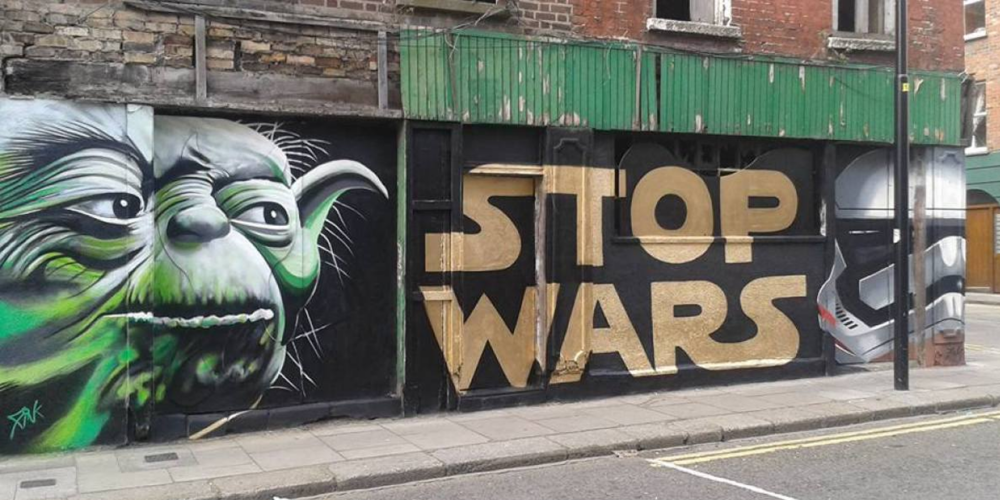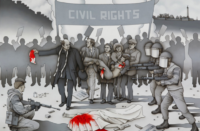Dublin may not boast quite the same scene as other cities, nor does Ireland in general, but no journey through any urban centre is devoid of the plague of advertising or of the sight of its counterpart, graffiti. Opposing sides of the same coin, they both involve the co-option of public space, just for very different purposes.
Graffiti at its core can be described as an expression of the individual over public space: in a sense a claiming of it – “This is me, look at my name!”. Even if that were the extent of it, it would be hard to claim that graffiti is not also a political act in a capitalist system based on consuming. While not all graffiti is political in content or even intent, graffiti exists as an act of resistance to the capitalist commodification of space, to the homogenisation of urban space, and of subversion of notions of public and private space.
As citizens in the street, we are bombarded by controlled, blank and often dead public spaces that are devoid of greenery, colour or art, comfortable spaces to be, and any sense of belonging or place. This limited public space is then also invaded by private spaces that are cordoned off, outside of our control, but dominate the surroundings. Advertising looms out over public areas from bridges and billboards, moves through them on buses, Luases, lorries, and occasionally, imprinted unbeknownst on the human body itself. One business in Australia put indented plates across bus stops and benches, so that when people sat down their latest ad for shorts was imprinted on their thighs.
Even without new sly ways of branding people, a bus stop is never just a bus stop under capitalism. Rather than let it be a provider of shelter when it rains, a place to get information relating to the stop such as timetables etc., instead, they are deemed to be under-utilised spaces unless they are lit up with advertising 24 hours a day. Even public transport, which has been discussed at length in these pages, cannot just be allowed to be authentically public: instead, it must be invaded by these small realms of paid-for private space, both inside and outside.
Of course, graffiti is not an answer or solution to the above, it is a reaction and therefore can also be co-opted, such as with “street art”, graffiti’s socially acceptable cousin. This is not to diminish the contribution that street artists make to cityscapes. Banksy is one of the most familiar political street artists and their work is immediately recognisable with its explicit anti-capitalist and anti-consumption message. Ironically, as Banksy has gained wider acclaim, their works have been collected and sold off to private collectors.
This commodification of street art has in some ways been used to attempt to push graffiti off the street. There are examples all over Dublin of where once graffiti could be found scrawled across the walls, where now street art has been used to “clean up” the area and replace it. An increasing number of these murals come with an accompanying plaque of the logo of the business that has sponsored the piece or, worse again, just turned the wall into an actual advertisement. Public art should be for the public and, while graffiti writers exist on the edge of that sentiment, they are a more genuine part of it than company X trying to sell you Y through pretty pictures.
A city “disfigured” with tags and running writer battles playing out on hoarding is one that that is not only deeply preferable to a manicured city of hostile architecture and advertising, but is also evidence that there are at least a few people there demanding to be heard and seen on a par with, if not over, the corporations that would etch their name into the very sky if they could.






